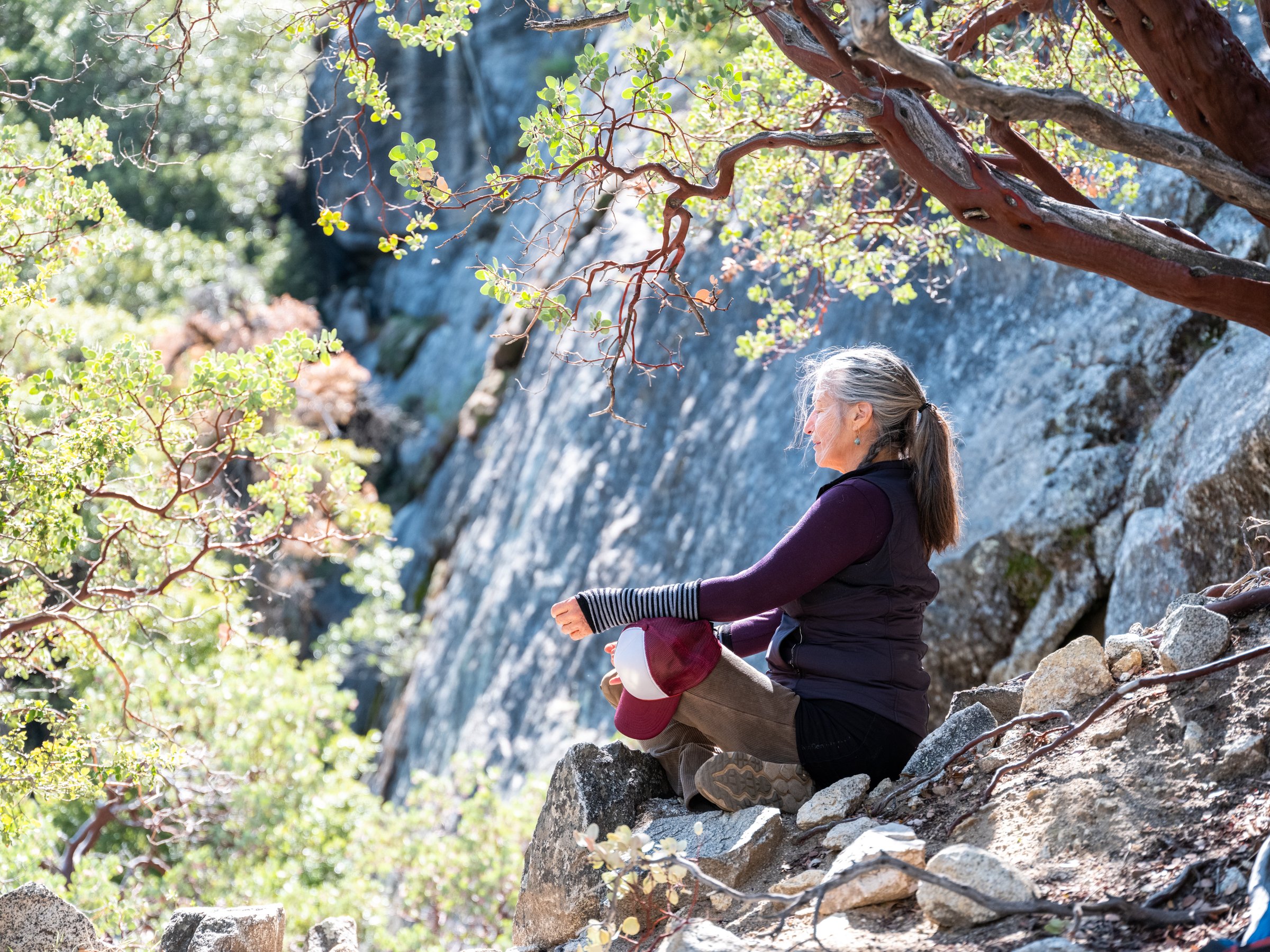A Walk in the Mountains: Insights into Meditation + Breath by Dennis Eagan
“Breath is the king of the mind.” - B.K.S. Iyengar
One of my favorite meditations combines breath awareness with walking in the mountains. All breathing is done through the nose. This allows 20% more oxygen to get to the lungs and reduces fluid loss.
Everyone has a natural walking pace. You can figure this out by walking a few minutes on flat ground and seeing how many breaths per minute on average you take. Going up a few flights of stairs will require you to breathe faster or slow your pace. The idea is to let the breath lead by adjusting your pace.
Photo by Patrick Bremser
When I hike in the High Sierra, for example, going up Mt. Whitney, I keep my respiration to 15 breaths per minute. If I have to take more breaths than that, I slow down. This way, my diaphragm determines my pace, not my mind, which tends to fixate on the goal—the summit. When I get to the top, I feel less fatigue and have more energy for the descent than if I’d allowed the mind to push the breath rate up.
On steep terrain, I pay close attention to each foot placement. Even a slight slip wastes energy. I have been amazed at how quickly a slope passes when I focus on my breath, feet, and pacing. At this stage in life, it’s all about conserving energy and finding ease while wandering the mountains.
There are lots of ways to play with this and it can be done anywhere. The number of breaths per minute is not important. Sticking with the number is the key. Terrain, altitude, and fitness are factors to consider. The benefit is holding the attention on the precious gift of the breath.
Photo by Patrick Bremser
Recommended Books for Further Exploration
“Light on Pranayama” by B.K.S Iyengar
“The Yoga of Breath” by Richard Rosen
“Anatomy of Hatha Yoga” by H. David Coulter
—
About Dennis
Dennis began practicing yoga in 1989 and has been teaching since 1998. As founder of Wild Yoga, he weaves nearly four decades of wilderness guiding and study into teacher training courses, workshops, and wilderness yoga retreats throughout the west from Baja to Alaska.
Dennis brings his knowledge and deep wisdom of yoga and spiritual ecology to Balanced Rock again in 2023 as a Lead Instructor for the 300-HR WildYoga Teacher Training, beginning in February.
You can learn more about Dennis’ offerings by visiting his website: wildyoga.com



